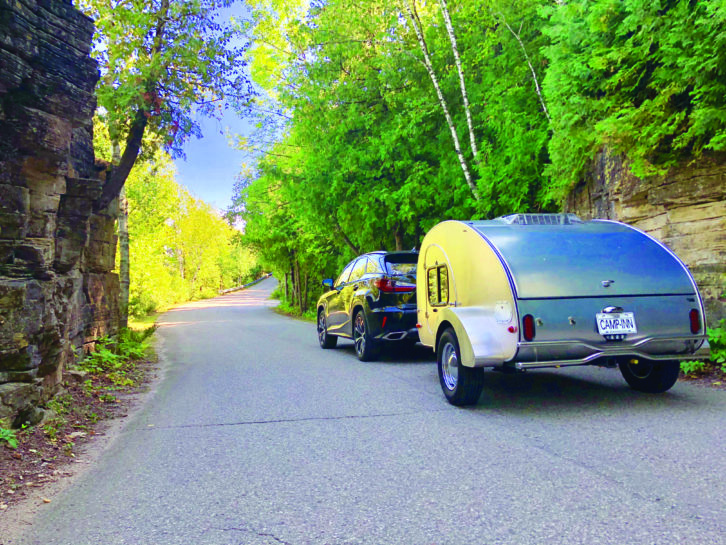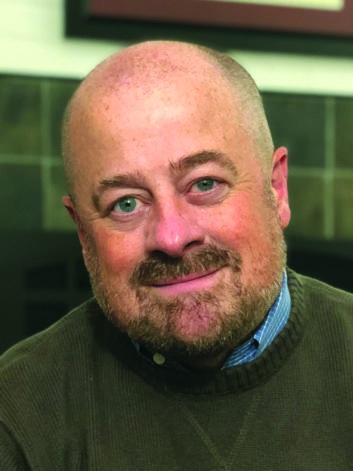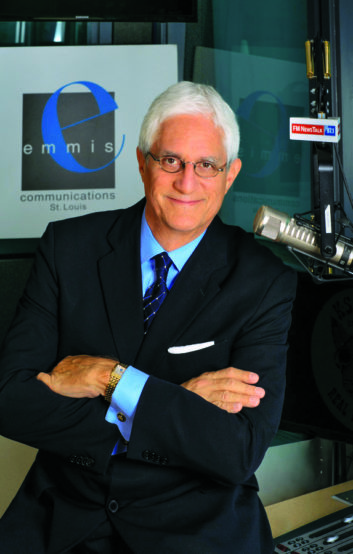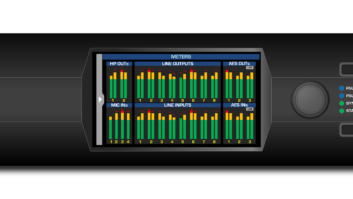This is the story of a very long journey. It began years ago, when eight-year-old Tom Langmyer toured the studios of WBEN(AM/FM/TV) in his hometown of Buffalo, N.Y., and decided that broadcasting would be his life’s work. He’s made many stops along the way and played many roles, eventually becoming the general manager at legendary radio stations like KMOX in St. Louis, WGN in Chicago and WTMJ in Milwaukee.
As you read this, chances are good that Langmyer is out on the open road, pulling his “teardrop” camper, looking for a place to stop and stay a while.

But as he’ll tell radio station owners and brokers, not just anywhere will do. As CEO and founder of Great Lakes Media Corp., he’s looking for what he calls “news deserts in decent-sized places with real upside, out of the shadow of major cities, which may be underserved by local media — be it radio, TV, a newspaper and/or a pure-play digital outlet.”
You could say that Langmyer has chosen to travel in a different direction than radio’s consolidators.
“During the past 20 years or so, companies quickly scooped up as many local stations as possible to create scale, and they used new technologies to create more efficiency,” he says.

“Although that’s a great idea in some ways, they missed the most important part, the actual purpose of local radio. Some companies didn’t understand how these local businesses actually operated in the first place, how local-direct sales worked, because they never took the time to actually meet the people or visit the stations let alone the communities they served.”
“LOCAL MEDIA ECOSYSTEM”
Langmyer believes that approach devalued radio’s greatest value proposition: Localism.
Instead of simply using technology as a means to reduce expenses, Langmyer wants to use it to help create a “local media ecosystem,” and hire creative people who can use it smartly to generate stronger local content. He plans to build “a total local media experience, not just ‘radio stations’ or ‘websites’ — but a robust local multiplatform experience, offering credible local news coverage and local entertainment through audio, video, local stories, images and combining that with true community leadership.”
Who wouldn’t be excited about that? Actually, quite a few people, he says.
As industry leaders tried to grow radio’s bottom line through operational savings and transactional revenue methods, the industry hired what he calls “radio factory workers” and “implementers,” rather than entrepreneurial leaders with vision, sales, marketing and product skills. Langmyer believes the key will be to add people who can deftly create content across a broader array of platforms and those who can sell a breadth of marketing solutions locally.
Langmyer doesn’t want negativity about radio’s recent past to impede its future. He’s looking for people who are thrilled about the opportunity for local media to reinvent itself with radio as a part of a new media mix, rather than those who “bitterly sit in a bar with a shot and a beer, staring at the closed-down radio factory across the street, pining for the good old days.”
JOHN BECK’S PERSPECTIVE

Like Langmyer, John Beck is a veteran large-market radio manager who is excited to be entering into radio station ownership.
After spending 35 years building local brands for Emmis in St. Louis, Beck’s longtime friend Joe Schwartz of Cherry Creek Media asked him to join in owning a radio cluster in the Flagstaff/Prescott, Ariz., area. They’ve teamed up with Withers Broadcasting President Dana Withers to form Stone Creek Media.
“The four Grenax stations we purchased in Arizona billed 9.8 percent of the market last year. Our fair share should be at least 25 percent,” so Beck is optimistic. While smaller markets are often good at the longstanding basics of radio, “many are inexperienced in the full spectrum of digital, event and influencer marketing. We had to learn those skills to compete in bigger markets.”
As Beck and Schwartz kick the tires on more potential acquisitions, Beck’s observations mirror Langmyer’s.
“Unfortunately, empty studios are the rule rather than the exception. This is the opposite of what radio must do to survive. Being local is our advantage over all the new audio services. We have to be there, have personalities that go out, meet people and become valued members of the community.”
Many community leaders welcome that approach.
“In one case, a bank wanted Great Lakes Media to come to their city badly enough that they offered to finance a deal 100 percent with no money down,” says Langmyer. “The need is definitely there.”
“I don’t think that radio station prices are going up anytime soon. The way to increase a property’s value is to grow its cash flow,” says Beck. He firmly believes that’s possible. “Advertisers love the impact that radio has had on their businesses and have thanked me over and over again for helping them grow. ”
“It’s time to stop wagging fingers at the ‘big, bad corporations,’ asking what they will do for us from the top down,” says Langmyer. “Instead, let’s ask ourselves how we can create content and advertising solutions for today’s local media consumers, from the ground up.”
Rather than transition out of radio, longtime programmer and consultant Dave Beasing is helping in radio’s transition. His new LA recording studio “Sound That Brands” produces podcasts for major national advertisers. Reach him at DaveBeasing@SoundThatBrands.com.







